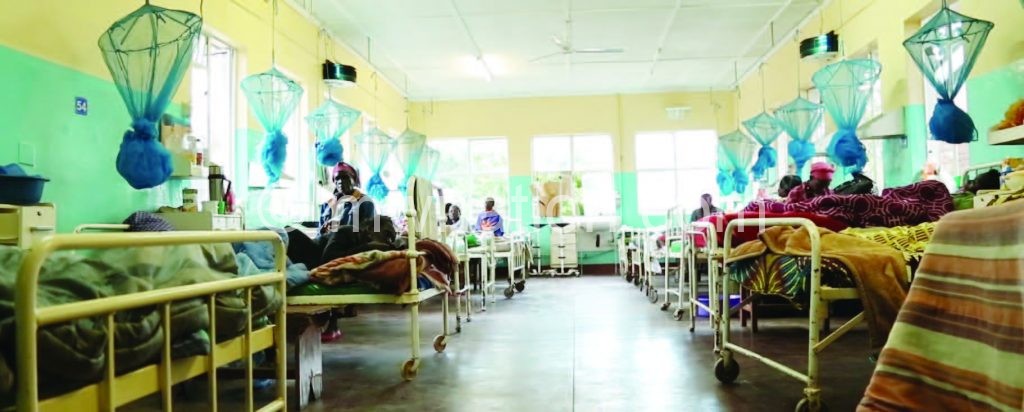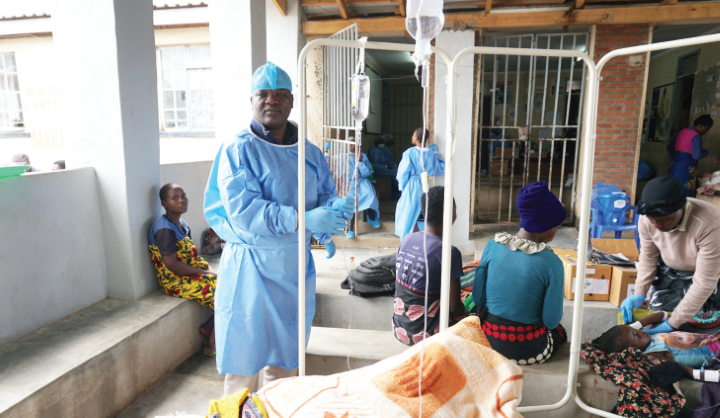Supporting pneumonia treatment
Physician Dingase Dula recalls the days when treating pneumonia at Queen Elizabeth Central Hospital (QECH) in Blantyre used to be a cumbersome job for healthcare workers.
This is because the hospital, whose pneumonia patients account for half of the 10 to 25 adult patients admitted daily from different conditions, did not have readily available oxygen supply.

“Pneumonia can either be treated at home if the patient is not too sick or at the hospital if the patient is having difficulties breathing or they can’t swallow tablets and they need an injection,” says Dula.
The internal medicine registrar at QECH says the situation was usually getting complicated when the patients required admission and oxygen.
Says Dula: “So, for patients who needed oxygen, the hospital had to buy from an external supplier and put it in canisters which we were only using for a few hours before running out.
“On the day of delivery from the suppliers, we used to carry these huge canisters on a stretcher running across the corridors while patients who were supposed to be on oxygen were gasping for air.”
Luckily, in the face of the coronavirus pandemic, one of QECH-partner institutions Malawi Liverpool Wellcome Trust (MLW) constructed an oxygen plant which generates a million litres of oxygen per day to more than 100 beds at the hospital.

Says Dula: “The plant, which supplies oxygen straight to the emergency department and in our high-dependency unit through a piped system, has made a tremendous difference in how we manage pneumonia patients.
“Sometimes we get various problems in the hospital such as stocking out of drugs unexpectedly, but at least oxygen is one of the things that we don’t have to worry about anymore.”
Besides the oxygen plant, MLW also established a high dependency unit (HDU) at QECH to provide support to pneumonia patients and other “sickest patients” who frequently require oxygen and expert management.
MLW senior clinical lecturer in critical care medicine Ben Morton says the HDU is instrumental in both providing direct patient care and for training clinicians, nurses and other healthcare professionals in the management of severe unstable conditions like pneumonia.
The unit, situated in Ward 3A, also provides specialist critical care nurse care at an increased ratio of nurses per patient compared to normal wards.
Morton says: “The unit provides uninterrupted oxygen supplies coupled with intensive vital signs monitoring to ensure that patients are responding to treatment or, if patients’ conditions deteriorate, that this can be picked up early and corrective measures put in place.
“For a very sick and unstable patient this type of care is vital to ensure that they do not further deteriorate before treatments like antibiotics and fluid therapy have had sufficient time to work.”
Dula is happy that QECH has made progress in the treatment and management of pneumonia and other acute respiratory infections.
However, the medical doctor empathises with district hospitals and central hospitals which do not have these facilities to treat and manage the disease.
Ministry of Health spokesperson Joshua Malango says pneumonia and acute respiratory infections are the leading cause of deaths in under-five children in the country.
He says the infections also cause a lot of sickness in adults, especially those with underlying medical conditions that cause low immunity.
Nationwide, Malango says challenges in the management of pneumonia and acute respiratory infections are common when there are severe cases of pneumonia requiring oxygen and specialised care such as intensive care units.
“Equipment to support the patient may not be there in all facilities and in some cases, we need energy to power the equipment,” he says.
However, Malango says there are several initiatives that the government is undertaking to address the challenges. These include routine vaccines given to children.
“Apart from the oxygen plants put in coordination with our partners at KCH [Kamuzu Central Hospital] and QECH to ensure good supply of the commodity, the new Phalombe Hospital and all new hospitals will be having dedicated oxygen plants,” he says.





